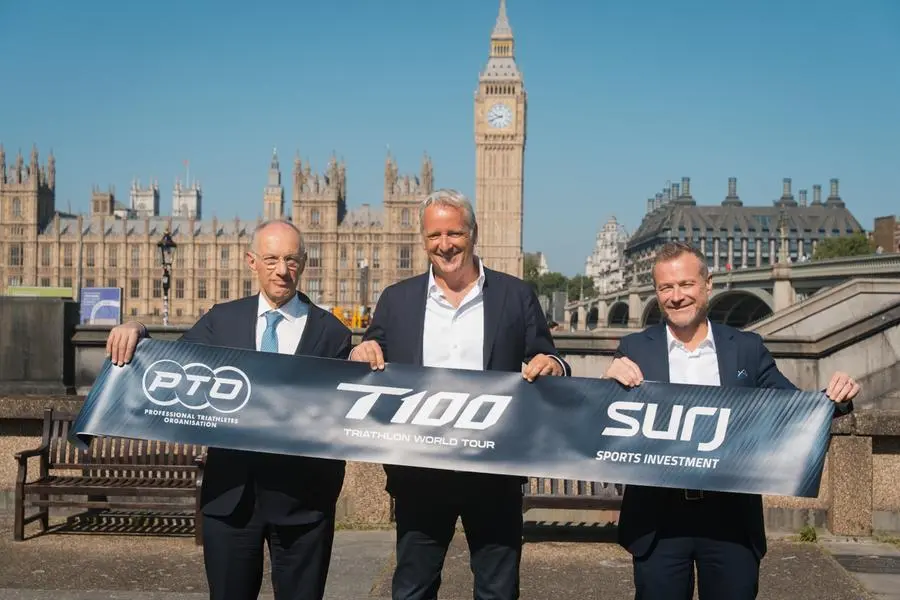PHOTO
FILE PHOTO: Toy figures of people are seen in front of the displayed Netflix logo, in this illustration taken January 20, 2022. REUTERS/Dado Ruvic/Illustration/File Photo
After a quarter in which Netflix reaffirmed its dominance in streaming video, its $5 billion deal to acquire rights to broadcast live wrestling suggests the streaming pioneer is taking a page from the old-school cable TV playbook.
Netflix said on Tuesday it will carry World Wrestling Entertainment's (WWE) flagship weekly program, "Raw," from next year, deepening its investment in live programming and offering its subscribers outside the U.S. other weekly wrestling shows including "SmackDown."
Although company executives said the deal did not signal a change to its focus on entertainment, it nevertheless sets Netflix on a collision course with traditional media as the streamer builds out its advertising business.
Netflix will be able to combine its deep cache of prestige dramas such as "The Crown," reality shows like "Squid Game: The Challenge," and movies including Bradley Cooper's Oscar-nominated "Maestro," with the must-watch immediacy of live sports and entertainment.
"Streaming is recreating the cable bundle," said Laura Martin, senior analyst for Needham & Co. "All of these streamers are going to have to have news and sports. Live events drive new sign-ups."
Indeed, Amazon Prime Video, Apple TV+, Warner Bros Discovery's Max and other streaming services already offer live professional sports.
Netflix on Tuesday said it added 13.1 million subscribers in the December quarter, its largest-ever fourth-quarter subscriber growth.
The WWE deal comes as streaming approaches the pervasiveness of cable TV in its heyday, prompting Netflix to pave new avenues of growth. The number of U.S. households that subscribe to a streaming service has reached 85%, according to data from researcher HarrisX.
The recent Hollywood strikes, which shut down U.S. production of scripted shows and films, may well have prompted more consumers to cancel their cable subscriptions and seek cheaper options, according to MoffettNathanson Research.
Indeed, media companies fed the Netflix "beast" during this period of light output by licensing shows like "Suits" and "Young Sheldon," MoffettNathanson noted. These reruns are capturing more viewer time.
Netflix was forced to invest billions in original content as major media companies clawed back TV series and films for exclusive use on their own streaming services, noted MoffettNathanson analyst Michael Nathanson in a broker note titled "More Rock, Less Maestro."
"Now, due to industry-wide challenges, Netflix has been able to flip that model back. This time, it seems for good," said Nathanson, who anticipates Netflix will revisit its strategy on original films, as financing these productions is a less attractive model than licensing previously released movies for home viewing.
Netflix is replicating "the best" of broadcast TV - which boasts prime-time shows with broad appeal and premium cable networks like HBO - with its collection of high-profile dramas, standup comedy specials, movies and boxing, said Marc DeBevoise, media veteran and CEO of streaming technology company Brightcove.
Professional wrestling - a hybrid of sports and entertainment - also delivers millions of viewers each week, providing reach that is attractive to advertisers.
"It's one of the few things that drives a 10 million-plus audience on the moment, which is what you need to drive an ad business," said DeBevoise. Netflix is trying to make advertising a key revenue-driver by 2025.
BROADENING INTEREST
Needham's Martin said the WWE deal was a defensive move, allowing Netflix to match the breadth of live content that is available on rival services, such as Warner Bros Discovery's Max and NBCUniversal's Peacock, in a relatively low-cost way.
For instance, Peacock's exclusive National Football League wild-card game earlier this month reached 27.6 million total viewers, according to Nielsen. NBCUniversal parent Comcast said it was the most-streamed live event in the history of the U.S. Sports now make up 23.5% of all national TV hours watched, up from 14.1% in 2018, according to GroupM.
Insider Intelligence senior analyst Ross Benes reckons Netflix will venture into more live events, though it is unlikely the streamer will bid for more expensive sports rights.
Bank of America media analyst Jessica Reif Ehrlich said Netflix was well-positioned to sell ads and develop "sports-adjacent" programming that may bring professional wrestling to a new audience, much as the "Formula 1: Drive to Survive" documentary series fueled the global popularity of racing. Nielsen found that this series inspired a U.S. audience to start watching more Formula 1 races.
"They've done such a phenomenal job in raising interest in sports that were of interest, but maybe not mass-audience before," said Ehrlich, referring to Netflix's earlier sports-related programs. "It's not just monetizing, it's broadening the demo and interest, on a global basis."
(Reporting by Dawn Chmielewski in Los Angeles Additional reporting by A. Samrhita and Yuvraj Malik in Bengaluru; Editing by Sayantani Ghosh and Matthew Lewis)





















